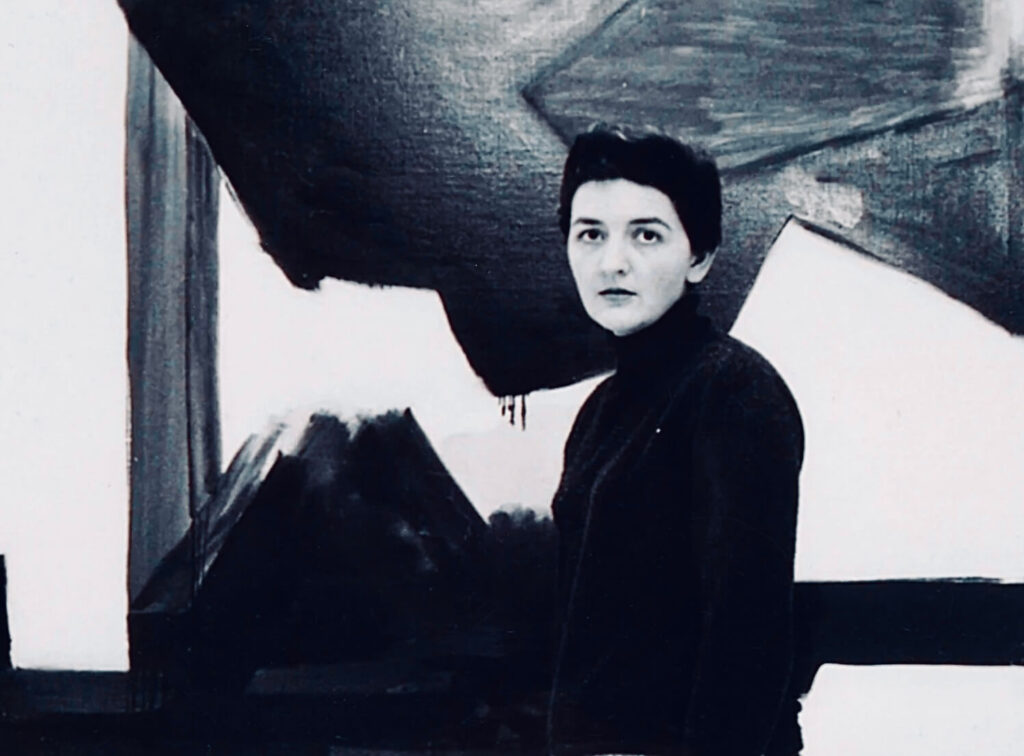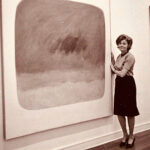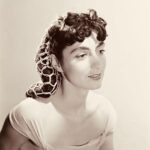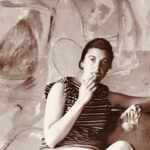Judith Godwin
Judith Godwin (1930-2021) was an American abstract expressionist painter whose dynamic works captured the spirit and energy of mid-20th century modernism. Her contributions to the art world are marked by a unique fusion of emotion, movement, and color, placing her among the notable figures of the New York School. This biography explores Godwin’s life, career, and two of her most significant artworks, illustrating her profound impact on abstract expressionism.

Early Life and Education
Judith Godwin was born on December 12, 1930, in Suffolk, Virginia. Growing up in a small town, she was surrounded by the natural beauty of the Virginia countryside, which would later influence her artistic vision. Godwin’s interest in art was nurtured from an early age by her family, particularly her mother, who encouraged her creative pursuits.
Godwin’s formal art education began at Mary Baldwin College in Staunton, Virginia, where she initially studied music. However, her passion for painting soon took precedence, leading her to transfer to the Richmond Professional Institute (now Virginia Commonwealth University). Here, she studied under the guidance of Theresa Pollak, a pioneering artist and educator who founded the school’s art department. Pollak’s emphasis on modernist principles and her encouragement of individual expression had a lasting impact on Godwin’s development as an artist.
Move to New York and Artistic Development
In 1953, Godwin moved to New York City to immerse herself in the burgeoning art scene. This was a pivotal moment in her career, as she became part of the vibrant community of artists, poets, and musicians that defined the New York School. She enrolled in the Art Students League of New York, where she studied under renowned artists such as Hans Hofmann, Will Barnet, and Vaclav Vytlacil. Hofmann’s teachings on color theory and spatial dynamics were particularly influential, shaping Godwin’s approach to abstraction.
During this time, Godwin also developed close relationships with other artists, including Franz Kline, Elaine de Kooning, and Willem de Kooning. These interactions further fueled her creative experimentation and solidified her commitment to abstract expressionism. Godwin’s early works from this period reflect her fascination with gestural abstraction, characterized by bold brushstrokes, dynamic compositions, and an intuitive use of color.
Career and Recognition
Godwin’s career gained momentum in the late 1950s and 1960s as she began exhibiting her work in solo and group shows. Her paintings were featured in prominent galleries such as the Betty Parsons Gallery and the Stable Gallery, which were instrumental in promoting abstract expressionism. Her work was well-received by critics and collectors, earning her a place among the leading figures of the movement.
One of the defining features of Godwin’s work is her ability to convey a sense of movement and emotion through abstract forms. Her paintings often evoke a visceral response, drawing viewers into a world of dynamic energy and vibrant color. This quality is evident in two of her most significant artworks, “Black and White Number 1” (1958) and “Light and Shadow” (1960).
Important Artworks
“Black and White Number 1” (1958)
“Black and White Number 1” is a seminal work in Godwin’s career, showcasing her mastery of gestural abstraction. The painting features a dramatic interplay of black and white, with bold, sweeping brushstrokes that create a sense of movement and tension. The composition is dynamic and expressive, capturing the viewer’s attention with its intensity and rhythm.
This work reflects Godwin’s interest in the emotive power of abstract forms. The stark contrast between black and white emphasizes the dramatic tension within the composition, while the fluid brushstrokes convey a sense of spontaneity and immediacy. “Black and White Number 1” exemplifies Godwin’s ability to create a powerful visual impact through the interplay of color, form, and gesture.
“Light and Shadow” (1960)
“Light and Shadow” represents another important phase in Godwin’s career, highlighting her continued exploration of color and abstraction. The painting features a vibrant composition of overlapping shapes and lines, rendered in a rich palette of blues, greens, and yellows. The interplay of light and shadow creates a sense of depth and dimensionality, inviting the viewer to explore the complexities of the composition.
The title “Light and Shadow” reflects Godwin’s interest in the contrasts and harmonies within her work. The painting’s vibrant colors and dynamic forms convey a sense of energy and movement, while the interplay of light and shadow adds a layer of complexity and nuance. This work showcases Godwin’s ability to create compositions that are both visually engaging and emotionally resonant, highlighting her mastery of abstract expressionism.
Later Career and Teaching
In the 1970s and 1980s, Godwin continued to develop her distinctive style, incorporating new techniques and materials into her work. She experimented with collage and mixed media, adding layers of texture and complexity to her compositions. Her later works often feature a more restrained palette and a greater emphasis on subtle tonal variations, reflecting her evolving approach to abstraction.
Throughout her career, Godwin was also dedicated to education and mentorship. She taught at several institutions, including the Art Students League of New York and the School of Visual Arts. Her commitment to teaching and her influence on younger artists extended her impact beyond her own work, contributing to the ongoing development of abstract expressionism.
Legacy and Influence
Judith Godwin’s legacy as an artist lies in her ability to create a unique visual language that combines emotion, movement, and color. Her innovative use of gestural abstraction and her dynamic compositions have left a lasting impact on the field of modern art, influencing generations of artists and viewers.
Godwin’s works are included in the collections of major museums and galleries around the world, including the Museum of Modern Art in New York, the Whitney Museum of American Art, and the Hirshhorn Museum and Sculpture Garden. Her influence extends beyond her own paintings, as she also played a crucial role in advocating for the recognition and inclusion of women artists within the art world.
Personal Life and Philosophy
Godwin’s personal life was marked by her dedication to her art and her relationships with fellow artists. She maintained close friendships with many of her contemporaries, including Franz Kline, whose untimely death in 1962 deeply affected her. These relationships provided a supportive network that nurtured her creativity and inspired her work.
Godwin viewed her paintings as a form of self-expression and exploration, a way to engage with the world and convey her inner vision. She believed in the power of abstraction to evoke emotional and intellectual responses, and her work often reflects a deep sense of curiosity and wonder about the human experience.
Conclusion
Judith Godwin’s artistic journey is a testament to her creativity, resilience, and profound understanding of color and form. Through her innovative use of gestural abstraction and her dynamic compositions, she created a body of work that continues to inspire and challenge viewers. “Black and White Number 1” and “Light and Shadow” are just two examples of her ability to convey complex ideas and emotions through abstract forms and vibrant colors. Godwin’s legacy as a master of abstract expressionism and a pioneer of modern art ensures that her work will continue to resonate with audiences for years to come.



